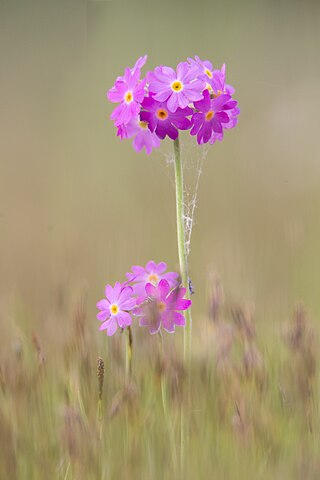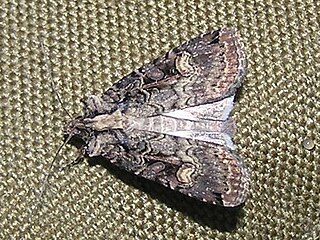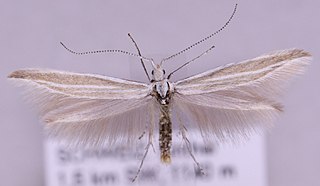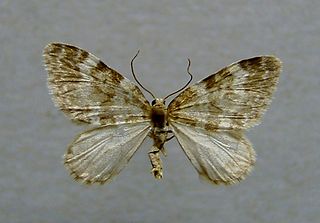
Primula is a genus of herbaceous flowering plants in the family Primulaceae. They include the primrose, a familiar wildflower of banks and verges. Other common species are P. auricula (auricula), P. veris (cowslip), and P. elatior (oxlip). These species and many others are valued for their ornamental flowers. They have been extensively cultivated and hybridised. Primula are native to the temperate Northern Hemisphere, south into tropical mountains in Ethiopia, Indonesia, and New Guinea, and in temperate southern South America. Almost half of the known species are from the Himalayas.

Primula farinosa, the bird's-eye primrose, is a small perennial plant in the family Primulaceae, native to Northern Europe and northern Asia, and (rarely) farther south at high altitudes in the mountains of southern Europe. This primrose thrives on grazed meadows rich in lime and moisture.

Hoplodrina octogenaria, the uncertain, is a moth of the family Noctuidae. It is found in the Palearctic realm.

Polymixis polymita is a moth of the family Noctuidae. It is found in most of Europe, but not in the Benelux, Britain, Ireland and the Iberian Peninsula.

Xestia stigmatica, the square-spotted clay, is a moth of the family Noctuidae. It is found in most of Europe, Transcaucasia, Caucasus, Kazakhstan, northern Turkey and northern Iran.

Opigena polygona is a moth of the family Noctuidae. It is found from the Netherlands, Sweden and Finland, through central and south-eastern Europe to central Asia, northern Iran, the Caucasus, Transcaucasia, Armenia, Turkey, Irkutsk, western and central China, Tibet, Nepal and northern India.

Cnephasia alticolana is a moth of the family Tortricidae. It is found in Siberia and most of Europe.

Agrochola nitida is a moth of the family Noctuidae. It is found in most of Europe, except Great Britain, Ireland, and the Iberian Peninsula.

Cassop Vale is a Site of Special Scientific Interest in the Durham City district of County Durham, England. It lies between the villages of Bowburn and Cassop, 7 km south-east of the centre of Durham..
Pig Hill is a Site of Special Scientific Interest in the County Durham district of north-east County Durham, England, situated 1 km south of the village of Easington Lane.

Amblyptilia punctidactyla, also known as the brindled plume, is a moth of the family Pterophoridae found across the Palearctic. The species was first described by the English entomologist, Adrian Hardy Haworth in 1811.

Lake Turner is a lake in the municipality of Sankt Kanzian in Carinthia, Austria.
Coleophora nubivagella is a moth of the family Coleophoridae. It is found from Germany and Poland to the Pyrenees, Italy, North Macedonia and Romania.
Coleophora obviella is a moth of the family Coleophoridae. It is found from the Czech Republic to Italy and Albania.

Coleophora rectilineella is a moth of the family Coleophoridae. It is found from France and Italy to Romania.

Perizoma incultaria is a species of moth of the family Geometridae. It is found from the Alps to the Carpathian Mountains and the mountains of the Balkan Peninsula.

Falseuncaria ruficiliana, the red-fringed conch, is a species of moth of the family Tortricidae. It is found in China (Xinjiang) and most of Europe. The habitat consists of limestone, heathland and moorland.
Bucculatrix enceliae is a species of moth in the family Bucculatricidae. The species was described in 1963 by Annette Frances Braun. It is found in North America, where it has been recorded from California and Arizona.
Bird's-eye primrose is a common name for several plants and may refer to:

Ritsa Strict Nature Reserve is a protected area in the Gudauta District of Abkhazia, in the country of Georgia. The reserve's main goal is to protect Lake Ritsa and conserve the ecosystems and species located in the surrounding mountain regions.

















